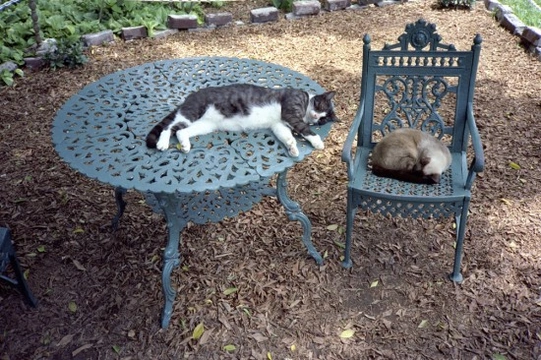
Cats as zoo animals : The Hemingway cats controversy
You may have already read our article all about polydactyl cats, the so-called ‘cats with thumbs.’ Polydactyl cats are just regular everyday moggies, with one key difference- a genetic mutation that has led to some cats being born with an extra toe on their front paws, giving them the appearance of having a thumb, a trait that has made these rather unusual cats popular and in demand as pets. Polydactyly, the state of being polydactyl or having an extra toe, is not in any way harmful to the cats in question. While it is indeed a genetic abnormality that would eventually have become bred out of the natural cat population, it does not cause any problems with movement, growth or development to the cats in question, and in fact in some cases seems to make them particularly dexterous! Nevertheless, polydactyl cats are simply regular domestic cats, of the same genus and species as any other domestic cat kept as a pet in any number of countries across the world. So why has the US Department of Agriculture made the unprecedented decision to class a large colony of well cared for and much loved polydactyl cats in the American state of Florida as zoo animals? Read on to find out more!
What are the Hemingway cats?
The Hemingway cats are a colony of forty to sixty polydactyl cats that live in the grounds of the property owned by the late author Earnest Hemingway in Key West, Florida. Hemmingway was given a gift of a polydactyl cat in the 1930’s, which was later bred and produced further polydactyl kittens, and so the colony grew. Hemingway House and Museum is open to the public, and the polydactyl cats that reside there are a popular attraction, often cited by visitors as their main reason for making the trip. Most of the cats living on the property are spayed or neutered (with the exception of a sufficient number of cats being left entire in order to perpetuate the line) well cared for, and allowed to roam freely around the house and gardens, which has been their home and that of their ancestors for over eighty years.
So what is the problem with the Hemingway cats?
An unnamed visitor to Hemingway House and Museum several years ago took exception to the way that the colony of polydactyl cats resident there were being cared for, the fact that they were given freedom to roam, and the sheer number of them. He notified the US Department of Agriculture of his objections, which triggered an investigation by the US Department of Agriculture (USDA) into the number of cats present on the property, and how they were controlled and cared for. As a result of their investigation, the USDA ruled that because the polydactyl colony was considered to be one of the key attractions to the property, and because admission was charged to enter the estate, the cats were in fact being kept as zoo animals. As such, the various laws and regulations pertaining to the care and housing of zoo animals, rather than those that apply to domestic pets, govern the management and care of the Hemingway cats under this classification.
What does this mean for the cats in question?
In order to comply with the rules and regulations governing the ownership and care of zoo animals, the law requires that a significant amount of changes must be made to the stewardship and living situation of the Hemingway cats. These changes include mandatory tagging and identification of each individual cat, designated raised sleeping areas to be provided, and perhaps most significantly, that all of the cats be locked into cages at night. The Hemingway cats have been resident in the grounds of Hemingway House and Museum for over eighty years, and have always been treated as domestic pets with free right to roam the property, sleep where they chose, and generally live the lives that they want to in much the same way as our cats at home generally do. The people tasked with the care and stewardship of the Hemingway cats firmly believe that the change in classification to zoo animals and the regulations that accompany it will have a significant affect on the day-to-day lives of all of the Hemingway cats, and not a positive one.
What happens next?
In December 2012, the US court of appeals heard the case made by Hemingway House and Museum to overturn the decision to classify the Hemingway cats as zoo animals and so, remove all of the various rules and regulations that accompany it. However, the US court of appeals upheld the original court’s decision, and Hemingway House lost their case.While Hemingway House has yet to publicise how they intend to move forwards from this point, the next step under the American courts system would be to take the case to the Supreme Court. The Supreme Court is the highest court authority in America, and if the case of the Hemingway Cats is heard there, it will almost certainly come with a significant amount of international publicity and interest from the cat-loving public worldwide.More information on Hemingway House and Museum and the polydactyl cats that live there can be found on their official website.



